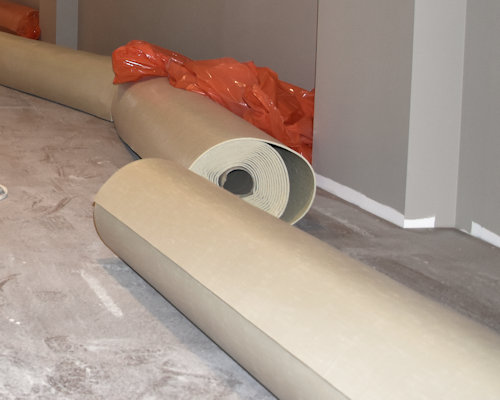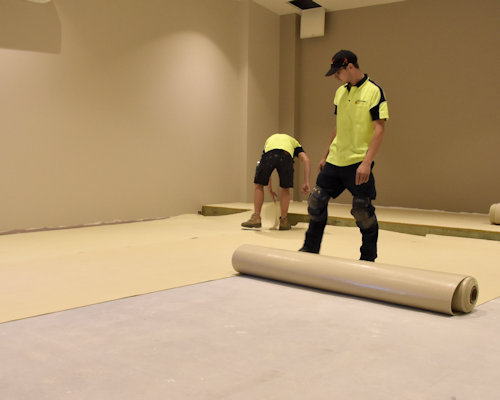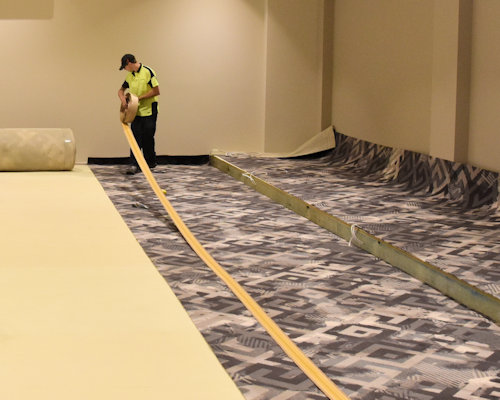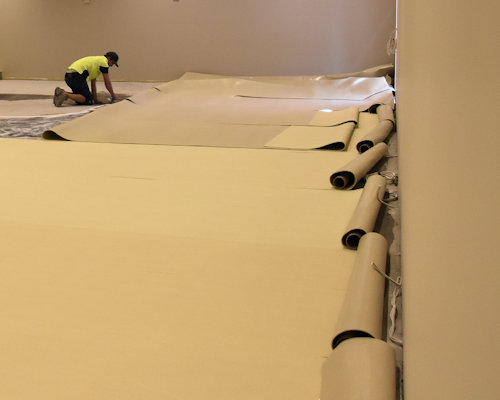Preparing the cushion underlay
 Audio for slide 1 (mp3 |6|KB)
Audio for slide 1 (mp3 |6|KB)
Before you apply adhesive to the subfloor to stick down the underlay, you'll need to plan the layout of the material and trim it to size.
You'll also need to give the underlay time to acclimatise to the humidity in the room, and 'relax' as its moisture content adjusts to the surrounding air.
Depending on the product and the manufacturer's recommendations, the acclimatisation period might be three hours or even overnight.

 Audio for slide 2 (mp3 |6|KB)
Audio for slide 2 (mp3 |6|KB)
Every manufacturer publishes installation guides for their underlay products.
You should always follow these recommendations, because they'll not only help you to do the job properly, they may also form part of the warranty conditions.
Below are some methods used to prepare an underlay for installation, prior to spreading the adhesive.
We'll talk more about the procedure for laying it into the adhesive in Section 5: Installing dual bond carpet.

 Audio for slide 3 (mp3 |6|KB)
Audio for slide 3 (mp3 |6|KB)
Planning the layout
The first step in deciding which way to roll out the cushion is to figure out where the seams will fall in the carpet.
Then lay the cushion so that the seams are at 90 degrees to the carpet seams.
If that's not possible and the seams need to run in the same direction, try to keep them at least 300 mm away from the carpet seams.

 Audio for slide 5 (mp3 |6|KB)
Audio for slide 5 (mp3 |6|KB)
Calculating quantities
In theory, the amount of underlay you'll need will be the same as the total carpet metreage.
In practice, though, many carpet layers like to estimate the underlay quantity by taking the carpet metreage and subtracting 10%.
This is because you are able to re-use waste pieces without them showing.
However, using small pieces can cause its own problems, so you should still try to keep all pieces as large as possible.


Learning activity
Audio 6 (mp3 |6|KB)Do the following calculations to find out how much underlay you will need to cover the room you measured up in the previous learning exercise (where you calculated gripper strip quantities):
- Square metreage of underlay required
- Lineal metreage of underlay required, based on the width of the roll you have chosen to use.
If you need to revise the techniques used to work between square metreage and lineal metreage when calculating floor covering quantities, go back to the following two units:






